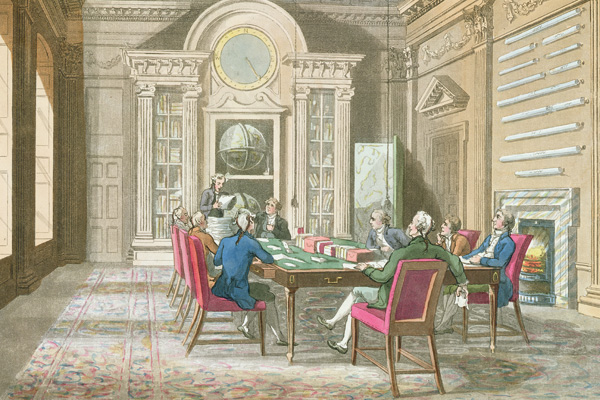‘That terrible place known as Westminster’: many readers might well agree with this, the first mention of our political capital in a charter dated 735 AD. However, as Robert Shepherd, journalist and political biographer, explains in his new book, all is not what it seems. The charter is a fake, cooked up by a 12th-century abbot of Westminster to get one over on those pesky monks at rival St Albans. Westminster, Shepherd asserts, was from the first a city of spin and has remained so ever since (and ‘terrible’ meant awe-inspiringly sacred, not awful, by the way).
The boundaries of Shepherd’s ‘historic’ Westminster are tightly drawn. They stretch only as far as Trafalgar Square in the north to St John’s Smith Square in the south, and from the Thames embankment to St James’s Park. Splicing together histories, old and new, of the key institutions and their buildings — Parliament, Abbey, Downing Street and Whitehall — inside the square mile of the Westminster village, the author is inevitably drawn into recounting a full-scale political history of Britain in 43 bite-sized chapters: but one as seen from inside the stockade. The many hatchings, matchings and despatchings (not to mention coronations) of royalty; the power struggles of politicians; the machinations of the ambitious clerics: if they took place at Westminster then they are included in this book.
Along the way we are treated to the usual set pieces of English history — Charles I’s execution outside the Banqueting House, Queen Caroline attempting to beat her way into the Abbey at George IV’s coronation, Churchill climbing onto the roof of the war rooms in his boiler suit shaking his fist at the Luftwaffe. Yet despite all the pomp and circumstance — in fact, because of it — there are moments of contemplation. The writer and MP Joseph Addison (founder of the original Spectator), strolling among the tombs and monuments of the great and the good in the Abbey, reflected with ‘sorrow and astonishment on the little competitions, factions and debates of mankind’.
And in 1819, at the height of contemporary political oppression, Shelley wished for an alternative Westminster stripped of its grandeur and institutions and become once more ‘a habitation of bitterns … shapeless and nameless ruins, in the midst of an unpeopled marsh’.
Whether by accident or design, women hardly get a look in unless they are queens, mistresses or prostitutes, so it comes as a relief in every way when in 1743 we encounter some gentry ladies urinating on MPs from the public gallery. And when the ‘half insane’ suffragettes ‘rush’ the Commons to the confusion of police and the prime minister there is a palpable sense that Westminster has changed forever.
There is little of the river, the main thoroughfare of the city for most of its existence, which flooded in 1236 (the year when the word ‘parliament’ first appears in written records) allowing boats to sail right into Westminster Hall. Ordinary men fare hardly better, rarely piercing and never bursting the Westminster bubble, but when they do there is usually a rumpus of some sort going on.
A plan by Edward VI’s regent Somerset to raid the stonework of St Margaret’s church for his new mansion in the Strand is opposed by the locals who ‘gathered together in great multitudes, with bows and arrows, staves and clubs and other such offensive weapons’ and saw off the henchmen.
We also learn that medieval monks had a penchant for spotted dick, that Westminster suffered two earthquakes in 1750 which made folk run out into the streets in terror, and that just before the Restoration, according to Pepys, street boys would shout ‘Kiss my Parliament’ in contempt at the restored Rump.
And as for those rivals at the other end of the Strand, they remain a distant menace, other than when the citizens of the City of London (nearly always in the form of ‘a mob’) come to pay their respects upriver. When Londoners torch the Abbot of Westminster’s house in the 1220s in revenge for fixing a wrestling match, the King sides with the Abbey, constructs a great gibbet to hang three offenders and cuts off the hands and feet of many others.
For much of its history the narrow streets of Westminster were clogged with traffic, dirt and inconvenience, and it would seem, quantities of dodgy building materials heading towards London having fallen off the back of a horsecart.
Today, says Shepherd, Westminster ‘has become a curious combination of a tribal reservation for those who want political power and a tourist attraction’. It was ever thus, I think, but he has written an entertaining — if unfinished — life of the village that spins on its own axis.






Comments